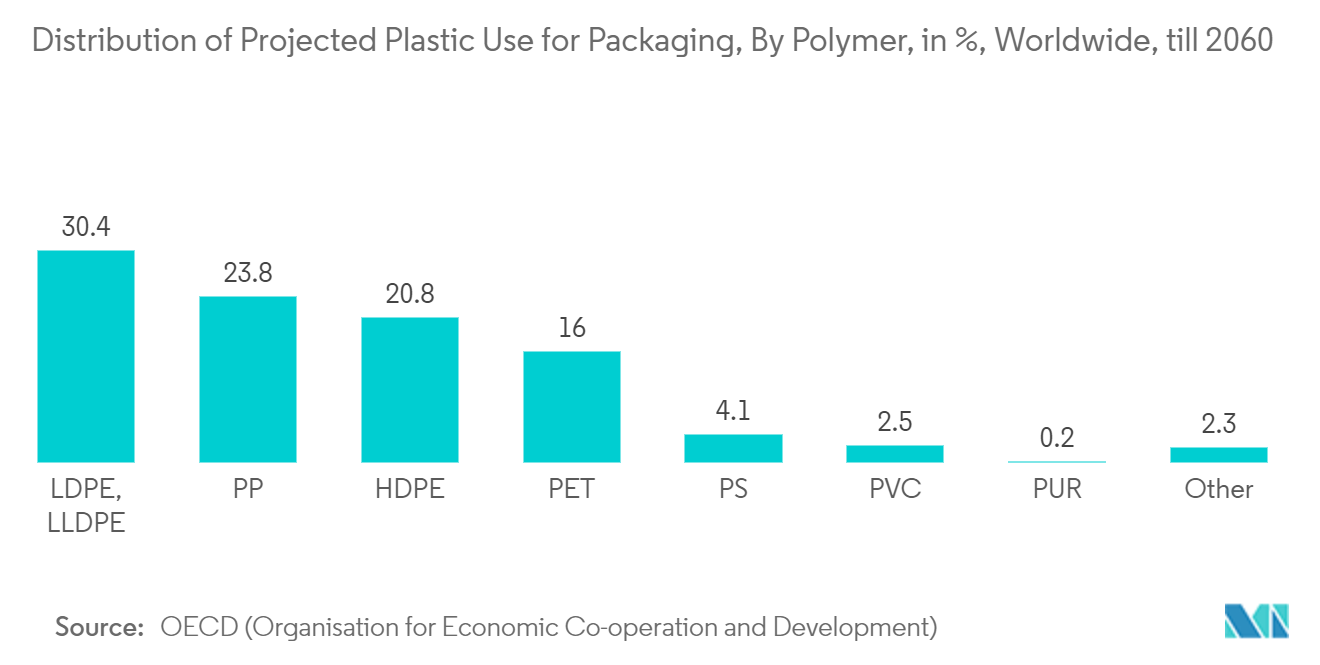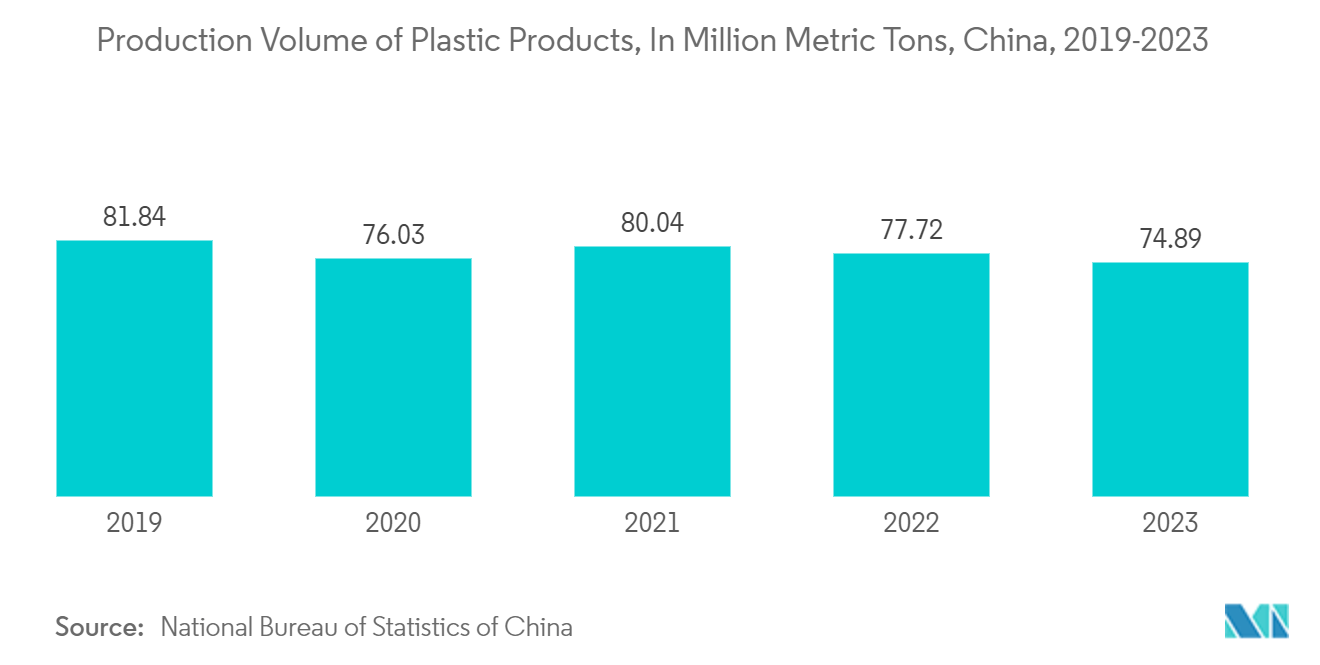Market Trends of Global Plastic Packaging Industry
The Food Segment to Occupy Major Share in the Market Studied
- The food packaging industry is one of the largest users of plastics. The demand for rigid plastic packaging for the food industry is witnessing growth, as it is increasingly replacing traditional materials such as paperboard, metals, and glass owing to its beneficial properties, such as being lightweight and having reduced cost.
- The increasing consumption of bakery products is further driving the adoption of flexible plastic packaging solutions to increase shelf life and avoid chalky bread conditions. With roughly 80% of baked goods being sold in flexible packaging and bakeries now producing a more comprehensive range of bread, buns, and rolls than ever before, including specialty and gluten-free, industry research indicates that market players are developing advanced solutions catering to the demand.
- Vendors are strategically partnering to enhance flexible packaging for the segment. For instance, in October 2023, Pakka Limited, formerly known as Yash Pakka Limited, a manufacturer specializing in compostable packaging solutions, introduced India’s first-ever compostable flexible packaging through a collaboration with Brawny Bear, a nutrition company renowned for its date-based healthy food products.
- Rigid plastic packaging is incorporated in plastic bottles and containers, and it is popular in industries for food packaging applications. Containers made of HDPE and LDPE materials are used to pack sauces and other consumer goods. Moreover, plastic bottles and containers have gained importance in the food industry due to their ability to provide extended shelf life to packaged food items.
- The current market outlook indicates a global demand for flexible packaging solutions for sweets and confectionery products. Flexible packaging formats, such as pouches, bags, and wrappers, are widely used in the confectionery industry due to their versatility, cost-effectiveness, and the ability to extend the shelf life. These packaging solutions offer convenience, portability, and attractive branding opportunities, enhancing product appeal and consumer experience. In addition, flexible packaging can incorporate resealable features, improving product freshness and reducing waste.
- According to the Organisation for Economic Co-operation and Development (OECD), LLDPE and LDPE are anticipated to account for more than a 30% share of the packaging products, as highlighted by recent market statistics. HDPE and LDPE are commonly used in the food industry for packaging due to their excellent barrier properties, durability, and safety. HDPE and LDPE are often used for bottles, bags, and containers. Moreover, PE films are also increasingly used in food applications to provide a flexible, protective barrier that maintains freshness, extends shelf life, and enhances the visual appeal of products.

Asia-Pacific to Hold the Largest Market Share in the Global Industry
- The Asia-Pacific packaging industry trends are heavily influenced by the rising per capita income, changing social atmosphere, and demographics. As a result of the shift, new packaging materials, processes, and forms are required.
- China is the largest country contributing to plastic packaging usage. The growing trend of packed meals, the increasing number of restaurants and supermarkets, and increasing bottled water and beverage consumption are significant factors driving the market growth.
- According to industry statistics from the National Bureau of Statistics of China, in 2023, China produced about 74.89 million metric tons of plastic products. Such high production of plastic product use in China is expected to drive the market value and demand for various rigid plastic packaging products.
- Moreover, market vendors are offering products that focus on sustainability commitments. For instance, as part of its commitment to sustainability, Essel Propack, a manufacturer of laminated plastic tubes based in India, produced recyclable HDPE barrier tubes. Platina 250 and Green Maple Leaf (GML) 300 Lamitubes were created for brands looking to switch to recyclable, environmentally friendly barrier packaging formats.
- In July 2023, PepsiCo India announced its plans to launch new 100% recycled polyethylene terephthalate (rPET) bottles for its Carbonated Beverage category. The company is introducing these bottles as part of its efforts to build a 'PepsiCo positive' (pep+) value chain that contributes to a circular economy system in the country.
- Furthermore, in December 2023, Mars China launched a Snickers bar featuring dark chocolate cereal in mono-material flexible packaging. This new product offers low-sugar and low-glycemic index (GI) options and individual packaging made from mono PP material, adhering to the concept of 'Designed for Recycling' that can be easily recycled in designated channels.


